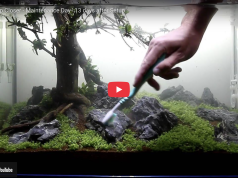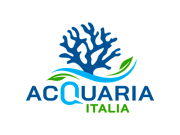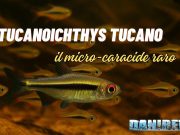This will be my first article about liquid fertilization. What I will write is according to all the tests that I have been done along these years of practice and not about what I did read over internet.
Fertilizing isn’t a scientific act that you should follow in a rigorous way; any aquarium is an aquarium and the conditions can be strictly different from one aquarium to another, even that we have used the same plants on them; light, CO2, general and carbonate hardness and soil could affect the liquid fertilization as well the way how your plants grows and consumes the nutrients.
Having a good and rich soil will reduce the doses of liquid fertilizer on water column because plants will be feed also from the roots and the availability of constant nutrients permits a good and healthy grow.

And if I didn’t use a rich soil, can I add some nutrients into the soil and renew it?
Yes, it is possible. In case of old substrate or it is possible to renew the soil adding some capsules of nutrients of ELOS TerraUno.
This will permits us to keep our planted aquarium with a small amount a liquid fertilization, quantity enough for the leaves have constant food during their photosynthesis. Plants metabolism could be normal to higher when exposed to high light and good quantity of carbon dioxide; but this subject will be explained on the 3rd part of this article.
Potassium:
The most important and complex nutrient for a planted aquarium is K (potassium). The non existence of a test for freshwater, turns this nutrient into a problem when used in a wrong way. Some problems that I have noticed using potassium, were in the past myths and related as a different source of problem.
Let’s see the case of the appearance of green dust algae.
Some people think that the problem is related to the lights; the use of bulbs dedicated to plants (pink bulbs) promotes the growing of these algae on glasses and hardscape… Are they right?! And about the lack of nutrients, could this cause this symptom? Bad or insufficient maintenance?
No, definitely not! The overdosing of Potassium is a big problem for all aquascapers and due my stubbornness, I just found the problem and how to control it.
If you dose K on the water and after 1 or 2 days you notice that your hardscape and/or glasses start getting green dust, it means that you add more potassium than plants need. In this case I suggest a water change in order to establish the balance of nutrients on water’s column and clean the glasses. The glasses will be your test for that! After, reduce the dose until the problem is solved, but try to keep it always on the water otherwise the other nutrients aren’t absorbed!
Green dust is an easy and fast way to notice that we are doing a bad liquid fertilization; if you don’t solve it and let it run like this, in a short time other algae will appear because excess of potassium will inhibit the assimilation of the other nutrients.
Phosphorous and Nitrates (NO3 and PO4):
There is a relation between both nutrients, if one doesn’t exist the other will not be assimilated by the plants; and if you don’t have K (potassium) none of both aren’t absorbed!
How it works the NPK (it is known by Nitrate – phosphorous – Potassium)?
• Nitrates and phosphorous are assimilated if potassium is present.
• Nitrates are absorbed if phosphorous is present and vice versa.
• In case of lack or excess of Potassium, nitrates and phosphorous aren’t assimilated.
Which values of N and P shall I keep on a planted aquarium?
Most of people likes to use the proportion of 10:1ppm (NO3:PO4), but since I’m not using different compounds (powders) to fertilize my aquariums, I’m really happy with the proportion used by ELOS on FASE2 or Planta2, that is the 5:1ppm. What I like most on these fertilizers is the way how the NO3 is released on the water. The PO4 is measure in few minutes after we dose but the NO3 not. The chemical reaction of these fertilizers with the water is different of other brands, the NO3 has a very slow release and available very slowly on the water and only after some hours you can measure it. This is absolutely amazing when we have invertebrates and fishes very sensible to NO3 and in the case of nitrogen cycle, you can simply start dosing since the plants are adapted. Usually the values of phosphorous are null during nitrogen cycle and the values of Nitrates are very high, the slow release of NO3 from the fertilizer will not affect and raise the current values of NO3, but the opposite because you’re adding phosphorous in the water and the plants start growing very fast and absorbing the NO3 available on the water faster, reducing the nitrogen cycle for a half time (when used good enzymatic bacteria)… sometimes even faster. This is why I fertilize my aquariums very soon and most of people don’t understand why!
Iron and trace elements:
Iron is very important for plants because helps to fix the nitrogen and chlorophyll production. In high demanding planted aquarium, iron should been dosed regularly because the plants during their photosynthesis will absorb the nutrients very fast and metabolism works faster than normal; if there is a lack of this nutrient plants will start getting chlorosis, the new leafs born yellow and the old leafs get even worse; they will be very weak and after a short time will die.
Trace elements are always associated on Iron fertilizer because they help the plants absorbing the Iron and the other nutrients.
ELOS Fase1 is composed by chelated irons (Fe-EDDHA, Fe-DTPA, Fe-EDDCHA) and micro elements (boron, zinc, molybdenum, manganese etc.) and can be used as unique liquid fertilizer in low demanding planted aquariums.
As potassium, there isn’t available on the market Iron tests for chelated Iron, so it means that any brand that supplies iron water’s test for measuring the iron that they produces, they are selling “shitty” products and Iron is not chelated. Fertilizing with no chelated iron is the same of polluting the water, that iron will not be absorbed by the plants and if you fertilize on the same time with phosphorous, the probability of get filamentous algae is of 90%.
Along these years I have tested a lot of liquid fertilizers and most of them are a waste of time and money. Some people are really happy with them because after dosing 30ml, 50ml, 100ml daily, they say that it is an amazing fertilizer because their plants are fantastic and without any kind of algae; but they don’t sit and think that they are spending money in one fertilizer with 95% of water… They are spending money in water!!!










